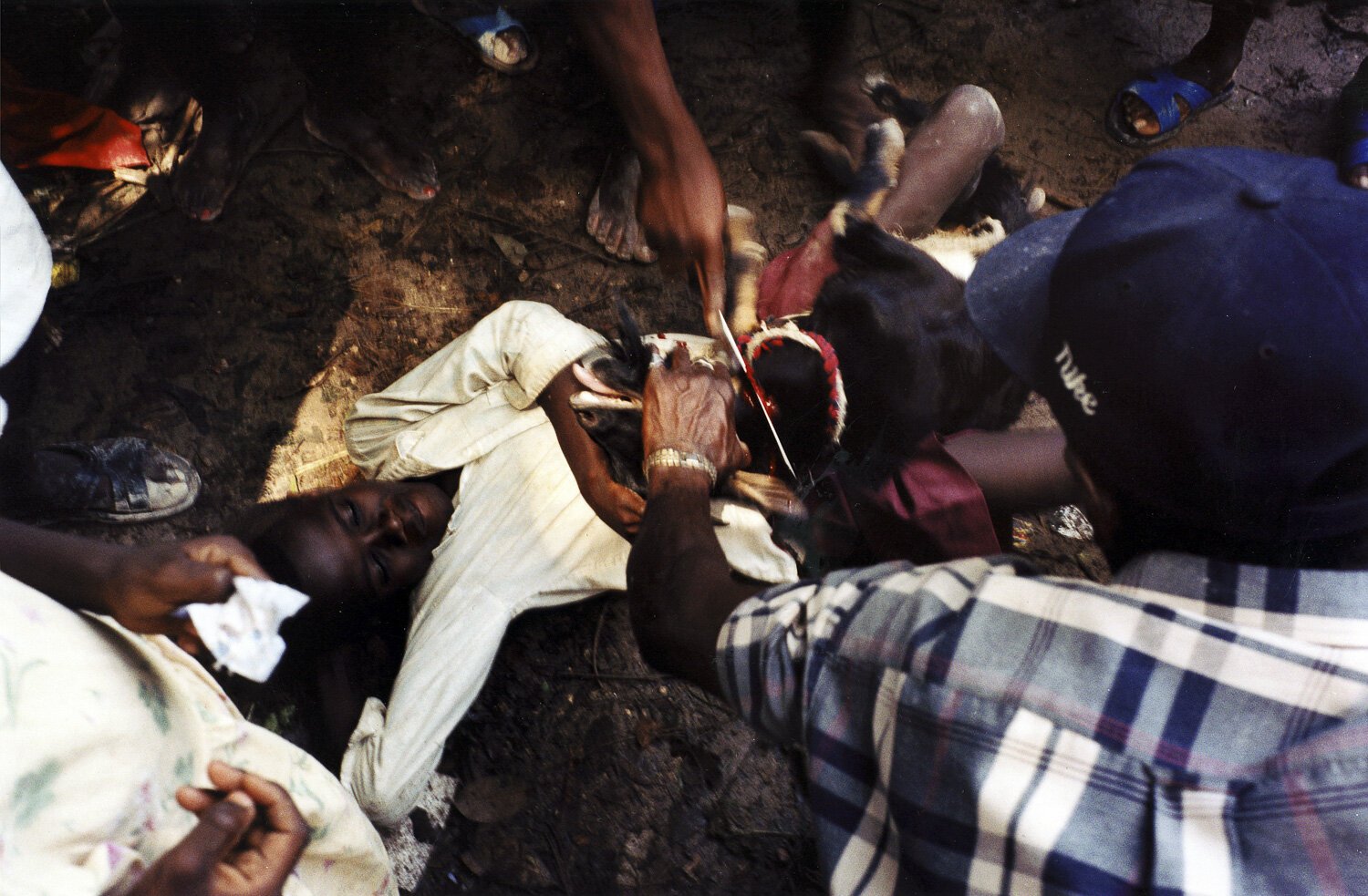
Voodoo
In Haiti
Reportage Photo-story about Voodoo ceremonies in Haiti
Voodoo pilgrims
Voodoo pilgrim making blessing
Voodoo sacrifice
Voodoo worshippers at waterfall
Voodoo pilgrim
Voodoo scarifice
Voodoo sacrifice for young boy
Voodoo pilgrim washing in waterfall
Voodoo offering of blood and money
Young boy covered in blood from a voodoo sacrifice
Voodoo pilgrims in waterfall
Voodoo priestess
Pilgrim at waterfall
voodoo prayer candle
Holding the head of a sacrifice
Photographs of Haiti’s Voodoo Traditions
Reportage Photography
Voodoo is deeply woven into the fabric of Haitian culture, shaping not only spiritual beliefs but also identity and social life. Often misunderstood and misrepresented, Voodoo is a complex religion with roots tracing back to West Africa—specifically Benin, formerly known as Dahomey. Some anthropologists suggest that its origins go back as far as 6,000 years, and today it’s estimated that around 60 million people practice Voodoo worldwide. As a documentary photographer focused on capturing global cultures and traditions, I travelled to Haiti on assignment for British Esquire magazine to document the vibrant world of Voodoo ceremonies.
In Haiti, a popular saying goes: “Haitians are 70 percent Catholic, 30 percent Protestant, and 100 percent Voodoo.” This reflects the syncretic nature of the faith, blending elements of Catholicism with traditional African beliefs. At the heart of the religion are spirits known as Loa, powerful entities who act as intermediaries between the living and the divine. Followers invoke the Loa through elaborate Voodoo ceremonies led by houngans (priests) and mambos (priestesses), which involve dancing, drumming, chanting, and animal sacrifices. The ritual photography I captured in Haiti goes beyond superficial depictions, showing how these ceremonies are not just religious acts, but deeply personal expressions of identity and resilience.
The history of Voodoo is inseparable from Haiti’s own story. During the colonial period, French rulers banned Voodoo as a threat to their control over the enslaved African population. But instead of being eradicated, Voodoo went underground, becoming a powerful symbol of resistance and unity. The clandestine Voodoo ceremonies played a key role in the Haitian Revolution—the world’s first successful slave uprising—which ultimately led to Haiti’s independence in 1804. To this day, Voodoo remains a pillar of Haitian culture, embodying the spirit of defiance and the struggle for freedom.
The images from this Haiti documentary photography project seek to capture the intensity and power of these ritualistic ceremonies. As a documentary photographer and reportage photographer, my aim was to highlight not just the dramatic visual elements, but the emotions, reverence, and commitment of the practitioners. The portraits and cultural reportage delve into the complexities of faith and the role Voodoo plays in modern Haitian life. This was not about capturing the exotic, but rather about understanding how a deeply misunderstood religion continues to shape the lives of millions.
Through Voodoo photography, I wanted to explore how spirituality, history, and cultural identity intersect. Each image is a testament to the resilience of a community that has faced centuries of oppression and misrepresentation. My hope is that these documentary images offer a more nuanced view of Voodoo culture—showing it not as an exotic curiosity, but as a profound expression of faith, heritage, and resistance.














